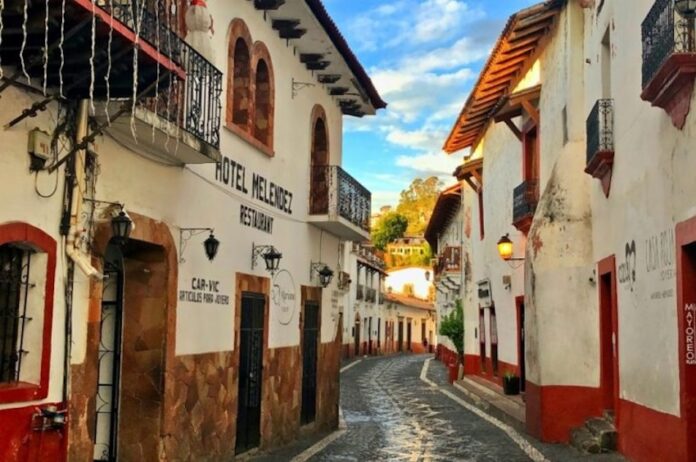I visited my first Pueblo Mágico (Magical Town), Tulum, in 1981, long before Mexico’s eponymous governmental tourism program even existed. In the 44 years since, my husband and I have been to 53 more. Not bad! The problem is that there are 177, so we have a long way to go before we reach our idealistic goal of visiting them all.
Several obstacles lie in the way, the main one being age. Barry’s 82, I’m 73, and as my mother-in-law used to say, “You’re not getting any younger.”
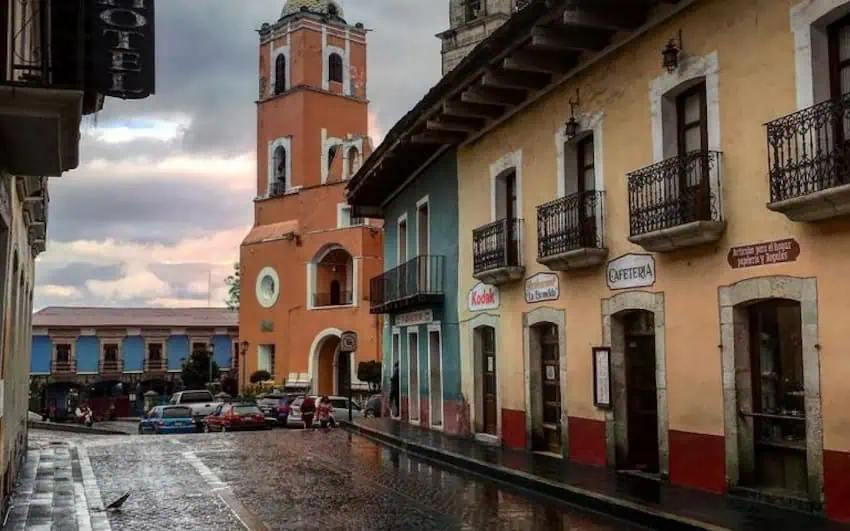
What is a Pueblo Mágico?
The Pueblos Mágicos program, launched in 2001, promotes tourism in towns that offer natural beauty, cultural richness, history, archaeology, cuisine and the arts. Mexico’s federal Ministry of Tourism (Sectur) — in charge of permitting a town to don the moniker — is raising the bar this year for obtaining and maintaining Pueblo Mágico status, with upgraded standards set to take effect this year.
I’m happy to hear this, because we were disappointed by a couple of the towns, unclear why they deserved the designation.
We live in the city of Guanajuato, which is surrounded by the states of Querétaro, Jalisco, San Luis Potosí, Zacatecas, and Michoacán, so we’ve been to many pueblos mágicos in these states. Every January for years, before my father died, we’d visit him in the U.S. and fly back to a different city in Mexico.
In this way we were able to easily explore other more distant pueblos mágicos, like the coffee towns of Coatepec and Xico in the state of Veracruz. Here are a few of our favorites:
Valle de Bravo
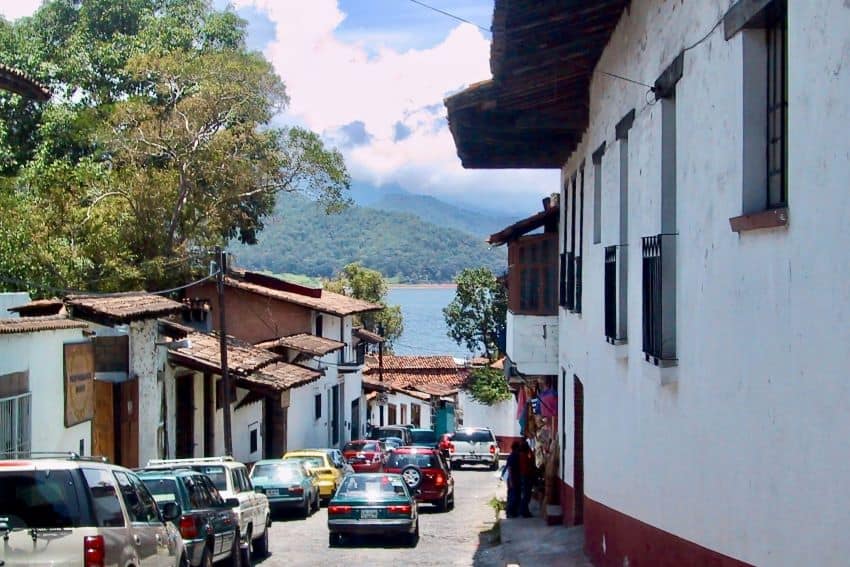
Valle de Bravo is a town built around an artificial lake, about 2 1/2 hours by bus from Mexico City, with a generous plaza and red terracotta-roofed whitewashed houses. It has a café ingeniously located right in the middle of a traffic circle, every window showing a different view — of virtually no traffic.
On the weekend, Valle gets busy with wealthy escapees from Mexico City who have second homes there, but during the week it’s tranquil.
The town offers plenty to do, from walking around the lake and kayaking to visiting the monarch butterflies and climbing the nontechnical Nevada de Toluca and hiking around its volcanic lake.
Nearby are also two spiritual centers of different types: About 45 minutes from town is a Tibetan Buddhist temple, said to be the tallest in the Western Hemisphere. We arrived in the middle of seemingly nowhere to find a huge white stupa with brightly-colored Tibetan prayer flags, an intricate awning, and a golden Buddha. Another spiritual structure on the edge of Valle is Marantha, a 1970s Carmelite sanctuary, with three chapels and stained glass windows. Its serene grounds include landscaped gardens, fountains, benches, and religious sculptures.
Jalpan
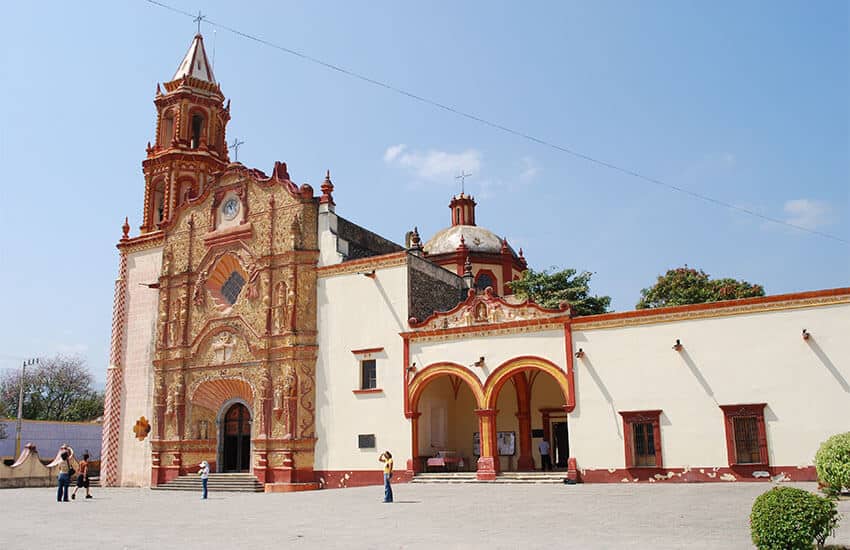
The town is the gateway to the Sierra Gorda, a mountainous area a few hours from the city of Querétaro. Picturesque Jalpan is built around a plaza and home to one of the five Franciscan missions built in the 17th century. The intricate and detailed mission is well worth a visit, but there’s much more to do around Jalpan, like visiting the other missions and the nearby Tancama ruins, which are among the most important pre-Hispanic settlements in the Sierra Gorda. Occupied between 200 and 900 C.E., the ruins are situated in a beautiful setting at the base of the Cerro Grande mountain.
Puente de Dios, the “Bridge of God,” is a beautiful two-mile walk along a riverbank, crossing the river several times on small wooden bridges. It leads to a limestone grotto and three waterfalls that flow down from the roof of a cave. The current from the three waterfalls is so powerful that thick floating ropes have been installed to help anchor swimmers.
Cuetzalan
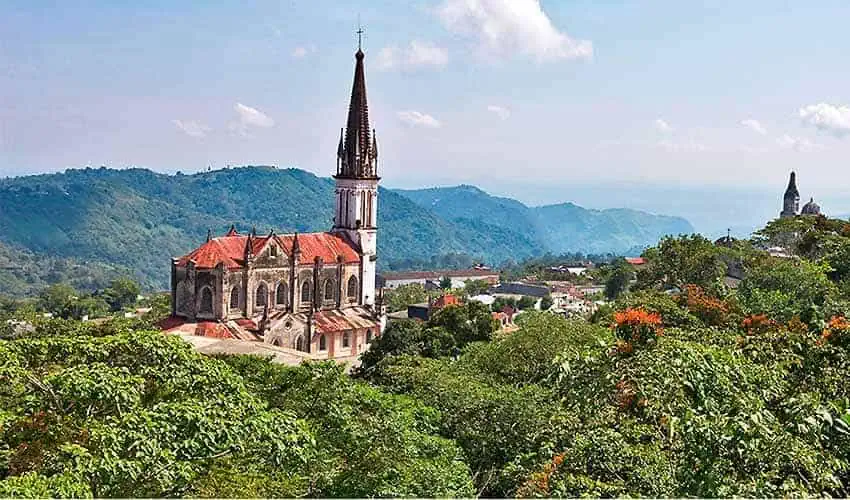
A sleepy remote village about two and a half hours from Puebla, Cuetzalan is famous for its weekly market and the Nahua people, who still wear native dress. On weekends, voladores climb a 100-foot pole in the central plaza, tie themselves with ropes, and spiral down, twirling around the pole. One remains on the top of the pole, unanchored, dancing and playing a flute and drum, before he also spirals gracefully down. The spiraling is a ritual ceremony that began in pre-Hispanic times and has since been incorporated into Mexican Catholicism.
Near the village are waterfalls, natural pools, caves, woods, opportunities for ziplining, and a ruin. An American missionary couple we met told us we were the first foreign tourists they’d seen in two years. Indeed, I felt very far away from the modern world there.
San Sebastián del Oeste

A 17th-century mining town, the village is perched high in the Sierra Madre mountains at 1,400m (4,600 ft), about 45 minutes from Puerto Vallarta. With its old colonial church, restored haciendas, and cobblestone streets, San Sebastián is often cited as a prime example of well-preserved colonial architecture in Latin America.
When Barry and I joined the local vaqueros in their cowboy hats sitting on the porch of the old historic hotel, I felt like I was in another century. We drank raicilla, the spirit cultivated locally from the agave plant, as we watched the festivities at the Saturday market below.
One of the reasons I like all these pueblos mágicos so much is that we saw almost no other tourists — Mexican or foreign. This is probably because we visited the towns midweek and because they’re either unknown, especially to foreigners, or not easily accessible.
Now that I’ve described them, I have a strong urge to return. But didn’t I just say our goal was to visit every pueblo mágico? We should be going to new ones, not revisiting ones I’ve seen. So many pueblos mágicos, so little time! This is what I call a delicious dilemma.
Louisa Rogers and her husband Barry Evans divide their lives between Guanajuato and Eureka, on California’s North Coast. Louisa writes articles and essays about expat life, Mexico, travel, physical and psychological health, retirement and spirituality. Her recent articles are on her website, https://authory.com/LouisaRogers
